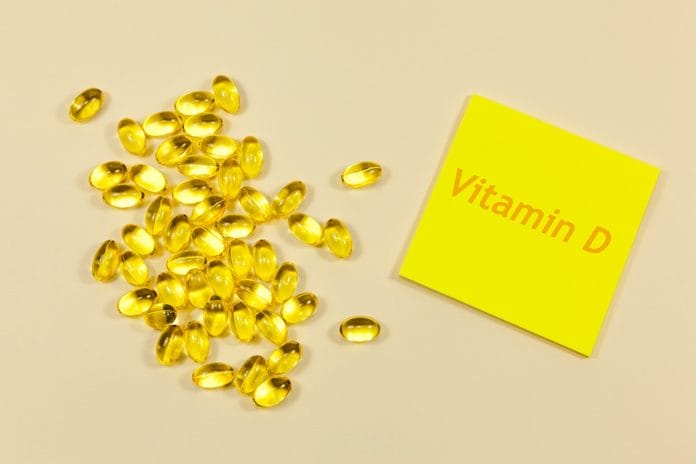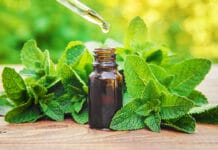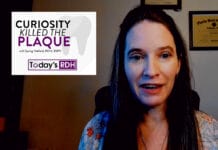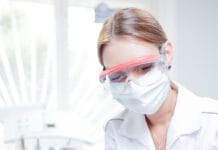Hygienists are known for their preventive role in health care. We often pride ourselves on being one of the only health-care providers who prevent disease and do not just treat it. Many hygienists like the idea of being able to tweak diets and home care to help their patients remain healthy and disease-free.
One of the supplements often discussed by dental hygienists is vitamin D. However, what are the benefits, and when should we be recommending it for patients?
When vitamin D is taken in through sunlight or diet/supplements, it is metabolized in the liver and transformed into a metabolite called 25-hydroxycholecalciferol; this is also referred to as 25(OH)D. This metabolite then forms the active hormone 1,25-dihydroxyvitamin D (1,25(OH)2D). This active hormone is widely expressed, but the kidneys are believed to be the main source. This latter form, which is also known as calcitriol, is the active form the body can utilize.7
I wanted to mention the metabolism of vitamin D because there is a subset of people who have a specific polymorphism that makes it impossible for them to metabolize vitamin D. These people need to have their vitamin D levels managed by their physician. However, this is pertinent information for dental professionals as it may help in the management of any oral diseases they are experiencing. The metabolism of vitamin D and its relevance will also be discussed later in this article.17
Caries
Vitamin D has a long history of being associated with oral health. It is believed by many to be a driving factor in the prevention and progression of oral diseases.
In the 1930s, most dentists believed dental caries was a disease of dental defect caused mostly by a lack of vitamins. This was considered the “dental defect hypothesis,” and it was supported by the American Dental Association (ADA) and the American Medical Association (AMA). Both organizations recommended vitamin D for caries prophylaxis.
At this time, it was also believed that clean teeth were very susceptible to decay. Over time, this hypothesis was slowly replaced by the “clean tooth hypothesis.” The ADA came out in 1945 and changed their stance, declaring that vitamin D did not prevent dental caries.1,4
Since 1945, our abilities to conduct science have vastly improved. More recent studies are indicating that optimal vitamin D levels (>75 nmol/L) are associated with a 39% decrease in dental caries in school-aged children.2,3 However, in 2016 findings from the NHANES survey 2005-2006 published in JADA, the authors found no significant association between 25(OH)D (the metabolite of vitamin D) and a decrease in dental caries.5
Other studies seem to have come to the same conclusion yet wording their conclusions in a way that leaves it very subjective. One such study concluded, “It was difficult to confirm the association between 25(OH)D levels and dental caries experience. However, our findings suggest that 25(OH)D insufficiency may be associated with dental caries.”6 It seems that there is no clear consensus on the efficacy of vitamin D in the prevention of dental caries at this time.
Periodontitis
As with the studies on dental caries and vitamin D, the studies on vitamin D and periodontal disease are quite conflicting. Some studies claim there is little to no evidence vitamin D is effective in the prevention or treatment of periodontal disease. Some claim they have mixed results, while others claim a benefit but that more research is needed.8-12
A systematic review published in 2009 concluded that vitamin D levels were not associated with periodontal disease. However, only one study used in the review supported that conclusion.11 Clearly, that left a lot to be desired, so another systematic review was published in 2017. This systematic review found, “The data to support or refute the association between vitamin D levels and periodontal disease are inconclusive at the moment,” which further supports the idea that we have no clue if there are benefits or not.10
To complicate things even further, another study published in 2018 investigated to see if there was any relationship between periodontal disease and vitamin D. This study had exclusions of patients with diabetes, pregnant and lactating women, patients using multivitamin supplements, patients with a history of bisphosphonates, patients with malabsorption syndrome, and patients with a history of medication use associated with periodontal disease.
The parameters that were assessed included plaque index, gingival index, probing pocket depth, and clinical attachment loss. The results showed a significant relationship between vitamin D levels (measured as 25(OH)D) and the following periodontal parameters: gingival index, probing pocket depth, and clinical attachment loss. No relationship was found with plaque index.12
Is there a mechanism by which vitamin D could benefit oral health?
With no clear guidance from multiple studies, how should we proceed with counseling our patients? The real question becomes: Is there a mechanism by which vitamin D could benefit oral health? The answer is yes.
Above I explained how vitamin D is metabolized and becomes a hormone called calcitriol that can be utilized by the body. However, I did not mention the many other processes that occur downstream as vitamin D goes through the metabolism process.
In one step of the process, an antimicrobial peptide is produced. Antimicrobial peptides are part of our innate immune response. We have them throughout our bodies, and they protect us from bacteria, viruses, fungi, and parasites. Studies show that, as a result of the production of 1,25(OH)2D, there is an upregulation in the production of cathelicidin or LL-37. Cathelicidin is an antimicrobial peptide that is secreted in saliva as well as other body fluids.13,14
Cathelicidin/LL-37 has a broad-spectrum antimicrobial role against oral microbes. This antimicrobial peptide disrupts the integrity of the bacteria cell membrane resulting in the death of the microbe. So as you can see, there is clearly a mechanism by which vitamin D could be beneficial to oral health.15,16
However, I would like to add one caveat before you start recommending vitamin D supplements. Be aware that too much vitamin D can have ill effects. Instead of recommending supplements, let’s focus on nutritional counseling and helping patients get the proper amount of vitamin D through food and outdoor activities. Not only will it be a more enjoyable way to get the recommended daily intake of vitamin D, but it is also a much safer way as to not overdo it with supplements.
Conclusion
Clearly, we need more robust studies to give us guidance on the relationship between vitamin D and oral health. While we wait for the science to guide us, we can be confident in the knowledge that vitamin D has a role in the innate immune response and has the ability to produce antimicrobial peptides that are useful in the prevention of infections.
Nutritional counseling is an especially important aspect of our job; please take the time to not only encourage healthy eating habits but explain why it is so important. Let your patients know how beneficial vitamin D can be for overall health and quite possibly oral health. It is not just a vitamin for bone health; it plays a much bigger role that has been overlooked by many.
Now Listen to the Today’s RDH Dental Hygiene Podcast Below:
References
- Hujoel, P.P. Historical perspectives on advertising and the meme that personal oral hygiene prevents dental caries. Gerodontology. 2019; 36(1): 36‐44. doi:10.1111/ger.12374. Retrieved from https://pubmed.ncbi.nlm.nih.gov/30318791/?from_single_result=Historical+perspective+on+advertising+and+the+meme+that+personal+oral+hygiene+prevents+dental+caries&expanded_search_query=Historical+perspective+on+advertising+and+the+meme+that+personal+oral+hygiene+prevents+dental+caries.
- Schroth, R.J., Rabbani, R., Loewen, G., Moffatt, M.E. Vitamin D and Dental Caries in Children. J Dent Res. 2016; 95(2): 173‐179. doi:10.1177/0022034515616335. Retrieved from https://pubmed.ncbi.nlm.nih.gov/26553883/?from_term=vitamin+D+and+dental+caries&from_pos=7.
- Wójcik, D., Szalewski, L., Pietryka-Michałowska, E., Borowicz, J., Pels, E., Beń-Skowronek, I. Vitamin D3and Dental Caries in Children with Growth Hormone Deficiency. Int J Endocrinol. 2019; 2019: 2172137. doi:10.1155/2019/2172137. Retrieved from https://www.ncbi.nlm.nih.gov/pmc/articles/PMC6360574/.
- Anderson, P.G. et al. The Influence of Vitamin D in the Prevention of Dental Caries. Journal of the American Dental Association. 1934; 21(8): 1349 – 1366. Retrieved from https://jada.ada.org/action/showCitFormats?pii=S1048-6364%2834%2918002-1&doi=10.14219%2Fjada.archive.1934.0237.
- Herzog, K., et. al. Association of vitamin D and dental caries in children. The Journal of the American Dental Association. 2016; 147(6): 413-420. Retrieved from https://jada.ada.org/article/S0002-8177(15)01212-X/abstract.
- Kim, I., Lee, H., Ju, H. et al.A cross-sectional study on the association between vitamin D levels and caries in the permanent dentition of Korean children. BMC Oral Health. 2018; 18:43. Retrieved from https://bmcoralhealth.biomedcentral.com/articles/10.1186/s12903-018-0505-7.
- Demay, M.B. The good and the bad of vitamin D inactivation. J Clin Invest. 2018; 128(9): 3736‐3738. doi:10.1172/JCI122046. https://www.ncbi.nlm.nih.gov/pmc/articles/PMC6118600/.
- Jagelavičienė, E., Vaitkevičienė, I., Šilingaitė, D., Šinkūnaitė, E., Daugėlaitė, G. The Relationship between Vitamin D and Periodontal Pathology. Medicina (Kaunas). 2018; 54(3): 45. doi:10.3390/medicina54030045. Retrieved from https://www.ncbi.nlm.nih.gov/pmc/articles/PMC6122115/.
- Bonnet, C., Rabbani, R., Moffatt, M.E.K., Kelekis-Cholakis, A., Schroth, R.J. The Relation Between Periodontal Disease and Vitamin D. J Can Dent Assoc. 2019; 84: j4. Retrieved from https://pubmed.ncbi.nlm.nih.gov/31199730/?from_term=vitamin+d+and+periodontal+disease&from_pos=1.
- Pinto, JPNS, Goergen, J., Muniz, FWMG, Haas, A.N. Vitamin D levels and risk for periodontal disease: A systematic review. J Periodontal Res. 2018; 53(3): 298‐305. doi:10.1111/jre.12531. Retrieved from https://pubmed.ncbi.nlm.nih.gov/29492977/?from_term=Vitamin+D+levels+and+risk+for+periodontal+disease%3A+A+systematic+review&from_pos=1.
- van der Putten, G.J., Vanobbergen, J., De Visschere, L., Schols, J., de Baat, C. Association of some specific nutrient deficiencies with periodontal disease in elderly people: A systematic literature review. Nutrition. 2009; 25(7-8): 717‐722. doi:10.1016/j.nut.2009.01.012. Retrieved from https://pubmed.ncbi.nlm.nih.gov/19539173/?from_term=Association+of+some+specific+nutrient+deficiencies+with+periodontal+disease+in+elderly+people%3A+A+systematic+literature+review.+&from_pos=1.
- Bhargava, A., Rastogi, P., Lal, N., Singhal, R., Khatoon, S., Ali Mahdi, A. Relationship between VITAMIN D and chronic periodontitis. J Oral Biol Craniofac Res. 2019; 9(2): 177‐179. doi:10.1016/j.jobcr.2018.07.001. Retrieved from https://www.ncbi.nlm.nih.gov/pmc/articles/PMC6561900/.
- Tangpricha, V., Judd, S.E., Ziegler, T.R., et al. LL-37 concentrations and the relationship to vitamin D, immune status, and inflammation in HIV-infected children and young adults. AIDS Res Hum Retroviruses. 2014; 30(7): 670‐676. doi:10.1089/AID.2013.0279. Retrieved from https://www.ncbi.nlm.nih.gov/pmc/articles/PMC4077005/.
- Dixon, B.M., Barker, T., McKinnon, T. et al.Positive correlation between circulating cathelicidin antimicrobial peptide (hCAP18/LL-37) and 25-hydroxyvitamin D levels in healthy adults. BMC Res Notes.2012; 5: 575. https://doi.org/10.1186/1756-0500-5-575. Retrieved from https://bmcresnotes.biomedcentral.com/articles/10.1186/1756-0500-5-575.
- Stukes, T.M., Shary, J.R., Wei, W., et al. Circulating Cathelicidin Concentrations in a Cohort of Healthy Children: Influence of Age, Body Composition, Gender and Vitamin D Status. PLoS One. 2016; 11(5): e0152711. doi:10.1371/journal.pone.0152711. Retrieved from https://journals.plos.org/plosone/article?id=10.1371/journal.pone.0152711.
- Liu, W., Dong, S.L., Xu, F., et al. Effect of intracellular expression of antimicrobial peptide LL-37 on growth of escherichia coli strain TOP10 under aerobic and anaerobic conditions. Antimicrob Agents Chemother. 2013; 57(10): 4707‐4716. doi:10.1128/AAC.00825-13. Retrieved from https://www.ncbi.nlm.nih.gov/pmc/articles/PMC3811468/.
- Wan, Q.S., Li, L., Yang, S.K., Liu, Z.L., Song, N. Role of Vitamin D Receptor Gene Polymorphisms on the Susceptibility to Periodontitis: A Meta-Analysis of a Controversial Issue. Genet Test Mol Biomarkers. 2019; 23(9): 618‐633. doi:10.1089/gtmb.2019.0021. Retrieved from https://pubmed.ncbi.nlm.nih.gov/31448964/.










